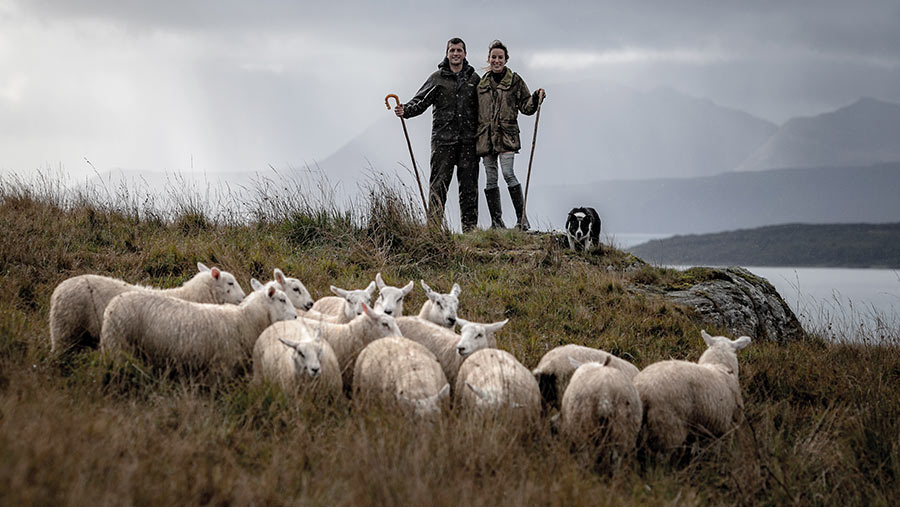Sheepdog School: The secret to a good stop
 © Neil Denham
© Neil Denham Man’s best friend, a loyal companion, and a farm’s greatest asset – the value of a well-trained sheepdog cannot be overestimated.
But even the most experienced of collies can have their quirks, leaving farmers frustrated and unsure on the best course of correction.
Here to help with training challenges are shepherding husband-and-wife team Emma Gray and Ewan Irvine.
See also: Blenheim shepherds launch sheep worrying awareness campaign
Based on the Scottish Isle of Bute, the pair are known for breeding and training some of the country’s finest and most successful collies – producing dogs that have broken world records at auction and achieved national trialling success.
More recently, they have set about sharing advice and training tips through their online platform, Sheepdog School. And, now, they are here to help Farmers Weekly readers, too.
Early groundwork – the secret to a good stop
A good stop is critical when it comes to working your dog on sheep.
In this month’s training tip and the accompanying video, we will take you through some of the common mistakes that people make, and give you the best techniques for success.
First off, don’t ask for the stop when you know you are not going to get it – asking for the stop when adrenaline is high increases the chance of your dog ignoring you.
Instead, you should prepare for the stop by using body language.
The easiest point for the dog to stop is at balance, usually 12 o’clock to your six o’clock, where it has got around the sheep and turned all their heads towards you, creating a sheep sandwich.
You can begin by asking them to “steady” as they reach balance. They will come to anticipate the stop and will begin slowing down in preparation.
Tone of voice is important here. Make “lie down” sound like “good dog” rather than angry shouting which can cause anxiety, doubt, or even a grip.
“Lie down” should be a positive place for your dog, so your body language should be non-threatening.
When your dog is tired, they may also be more compliant with stopping.
For young dogs, early training should be fun, so it’s important to keep your enthusiasm high.
We don’t expect them to stop for long, releasing them back to work quickly is a reward for the stop.
A visual aid can also help, such as a raised arm or training pipe to reinforce the instruction.
What to avoid
- Never punish your dog for stopping, even if they have given you the runaround. Reprimanding them makes it less likely they’ll stop for you in the future.
- Ask once, don’t repeat “lie down, lie down, LIE DOWN!” or you will be conditioning your dog to wait for the third or fourth command before they think you actually mean it.
- Don’t give the next flank command before getting a full halt.
By getting the foundations right at hand in these early stages, your dog will get used to stopping each time it hears your command.
If you put the tips above to use and remain consistent, you will develop a happy confident dog with a secure stop and reap the benefits for years to come.
Send us your pictures
To celebrate the launch of our sheepdog training series, we want to see your working dogs and cab companions on the farm.
Send in your best snaps to the Farmlife Framed gallery.
